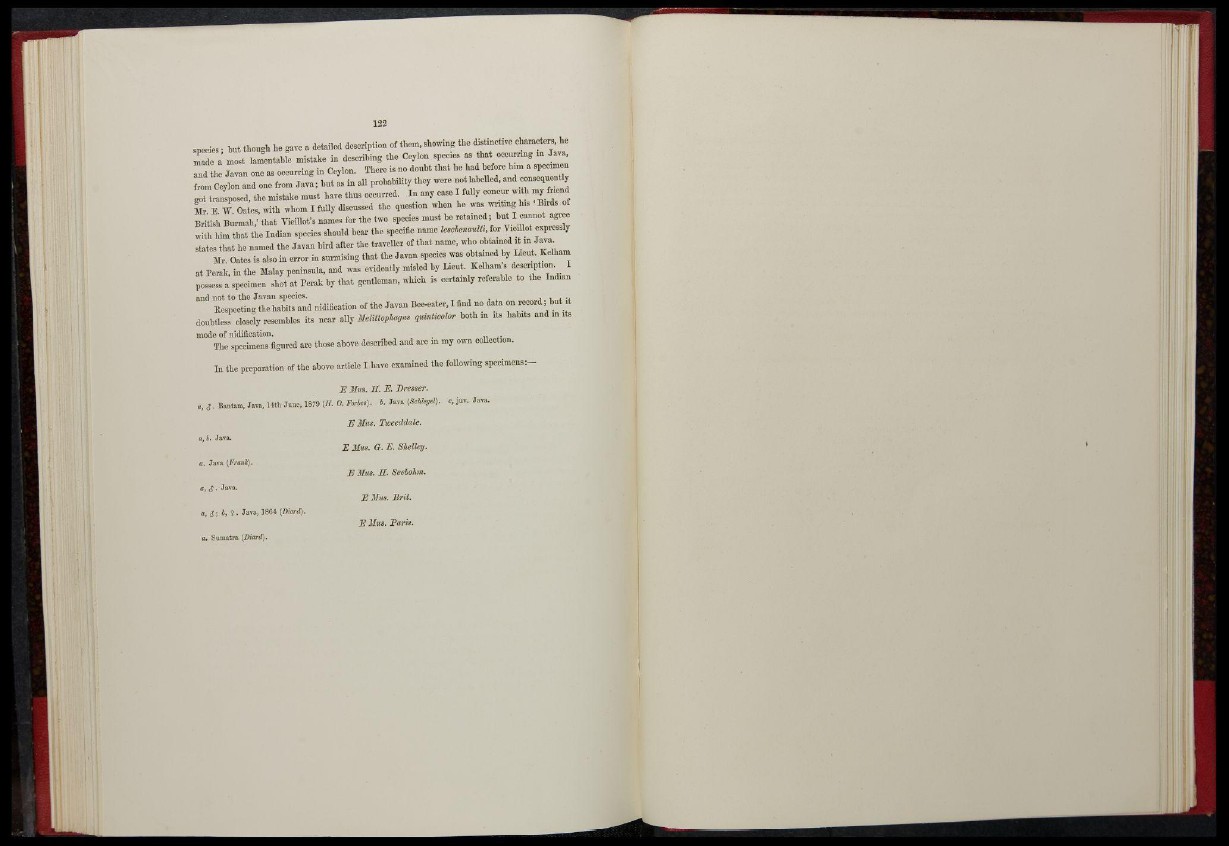
species; but though he gave a detailed description of them, showing the distinctive characters, he
made a most lamentable mistake in describing the Ceylon species as that occurring in Java,
and the Javan one as occurring in Ceylon. There is no doubt that he had before him a specimen
from Ceylon and one from Java; but as in all probability they were not labelled, and consequently
got transposed, the mistake must have thus occurred. In any case I fully concur with my friend
Mr. E. W. Oatcs, with whom I fully discussed the question when he was writing his 1 Birds of
British Burmah,' that VioiBot's names for the two species must be retained; but I cannot agree
with him that the Indian species should hear the specific name Icschenaulti, for Vieillot expressly
states that he named the Javan bird after the traveller of that name, who obtained it in Java.
Mr. Oates is also in error in surmising that the Javan species was obtained by Lieut. Kclham
at Pcrak, in the Malay peninsula, and was evidently misled by Lieut. Kclham's description. I
possess a specimen shot at Pcrak by that gentleman, which is certainly referable to the Indian
and not to the Javan species.
Respecting the habits and nidification of the Javan Bee-eater, I find no data on record; but it
doubtless closely resembles its near ally Melittophagus quiiitico/or both in its habits and in its
mode of nidification.
The specimens figured are those above described and are in my own collection.
In the preparation of the above article I have examined the following specimens:—
E litis. H. E. Dresser,
a, J - Bantam, Java, 14th June, 1879 (//. 0. Forbes), b. Java (Scklegel). c, juv. Java,
E Hits. Ticeeddale.
E Mm. G. E. Shelley.
a. Java {Frank).
E Mas. H. Seebohm.
a, 3. Java.
E Mas. Brit.
a,S; b, ? . Java, ]8G4 (Diard).
E Mus. Paris.
a. Sumatra (Diard).